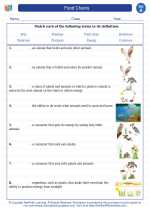Cellular Signaling
Cellular signaling, also known as cell signaling, is the process by which cells communicate with each other to coordinate their activities and respond to external stimuli. This communication is essential for the proper functioning of multicellular organisms and the regulation of various physiological processes.
There are several key components and mechanisms involved in cellular signaling:
- Signaling Molecules: These are molecules such as hormones, neurotransmitters, and cytokines that are released by cells to transmit signals to neighboring or distant cells.
- Receptors: Cells have specific receptors on their surface or inside the cell that can recognize and bind to signaling molecules, initiating a response within the cell.
- Signal Transduction: Once a signaling molecule binds to its receptor, it triggers a series of molecular events inside the cell known as signal transduction, leading to a specific cellular response.
- Cellular Response: The signal transduction pathway ultimately leads to a cellular response, which can include changes in gene expression, cell growth, metabolism, or other physiological functions.
There are several types of cellular signaling, including:
- Endocrine Signaling: Signaling molecules are released into the bloodstream and carried to distant target cells.
- Paracrine Signaling: Signaling molecules act on nearby target cells, often within the same tissue or organ.
- Autocrine Signaling: Cells respond to signaling molecules that they produce themselves.
- Neuronal Signaling: Signaling between nerve cells using neurotransmitters.
Understanding cellular signaling is crucial for various fields, including medicine, biology, and pharmacology, as it plays a significant role in disease processes and the development of therapeutic interventions.
Study Guide
Here are some key concepts to focus on when studying cellular signaling:
- Identify the different types of signaling molecules and their roles in cellular communication.
- Understand the process of receptor binding and activation, including the concept of ligands and receptor specificity.
- Learn about the various signal transduction pathways, such as protein kinase cascades, G-protein coupled receptors, and second messenger systems.
- Explore the diversity of cellular responses that can be triggered by signaling pathways, including changes in gene expression, cell proliferation, and metabolic regulation.
- Examine the significance of cellular signaling in physiological processes, such as development, immune response, and homeostasis.
- Discuss the implications of dysregulated signaling pathways in disease states, and the potential for targeted therapies that modulate cellular signaling.
By grasping these fundamental concepts and principles of cellular signaling, you will develop a deeper understanding of how cells communicate and coordinate their activities, laying the groundwork for further exploration in the field of molecular biology and medicine.
[Cellular Signaling] Related Worksheets and Study Guides:
.◂Science Worksheets and Study Guides First Grade. Food Chains

 Activity Lesson
Activity Lesson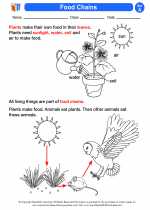
 Worksheet/Answer key
Worksheet/Answer key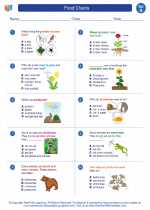
 Worksheet/Answer key
Worksheet/Answer key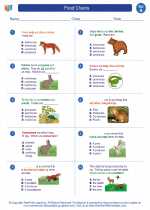
 Worksheet/Answer key
Worksheet/Answer key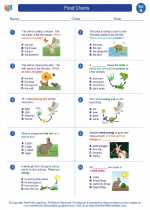
 Worksheet/Answer key
Worksheet/Answer key
 Vocabulary/Answer key
Vocabulary/Answer key
 Vocabulary/Answer key
Vocabulary/Answer key